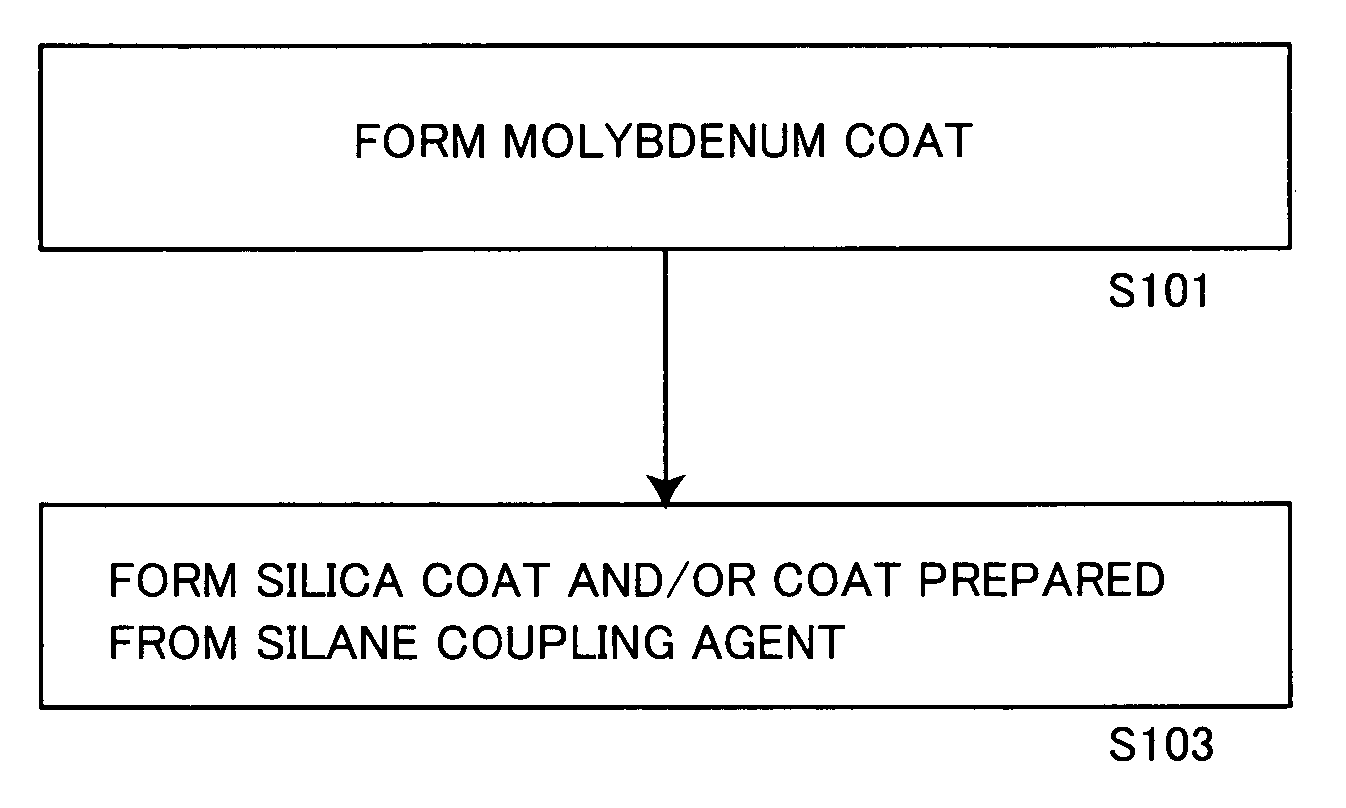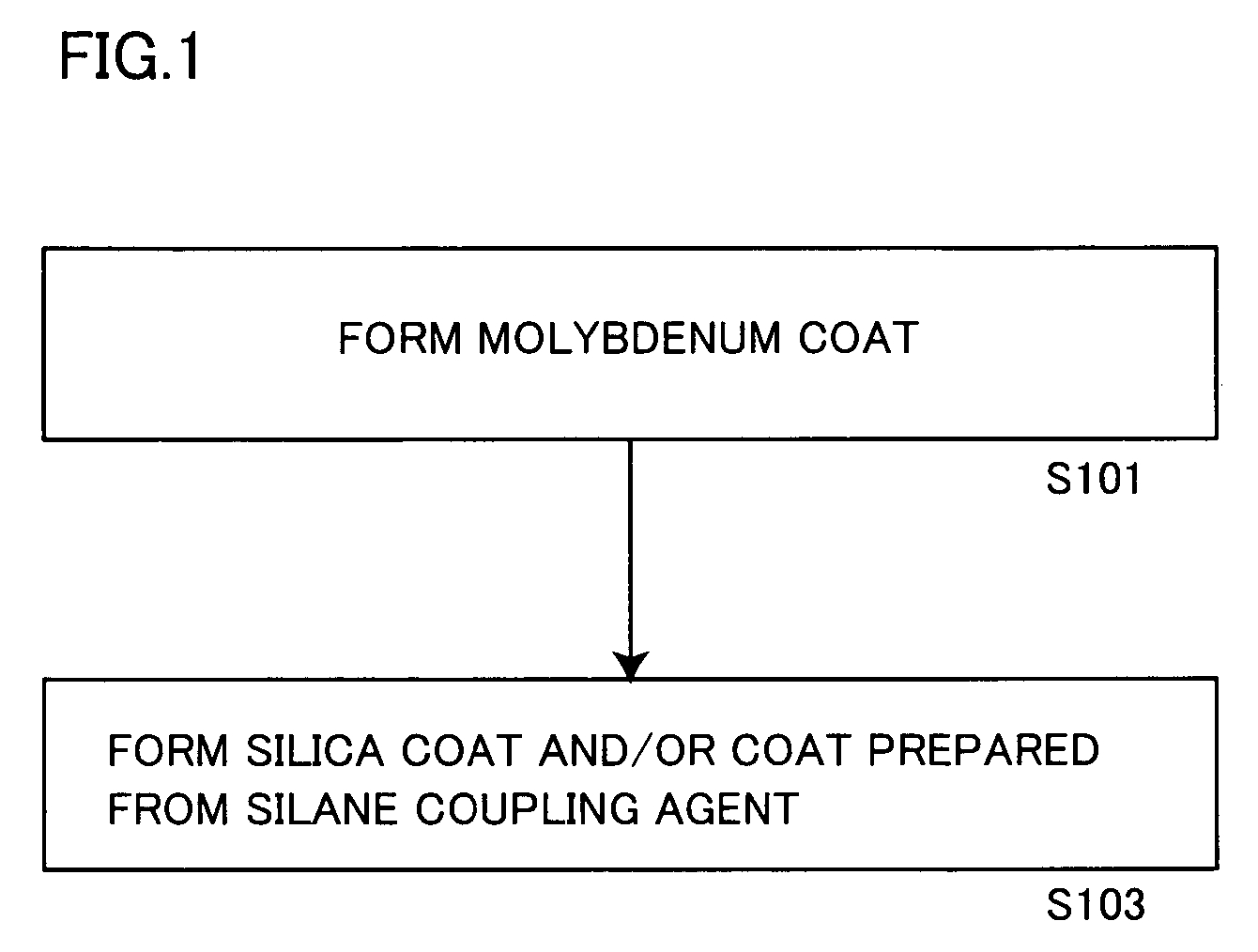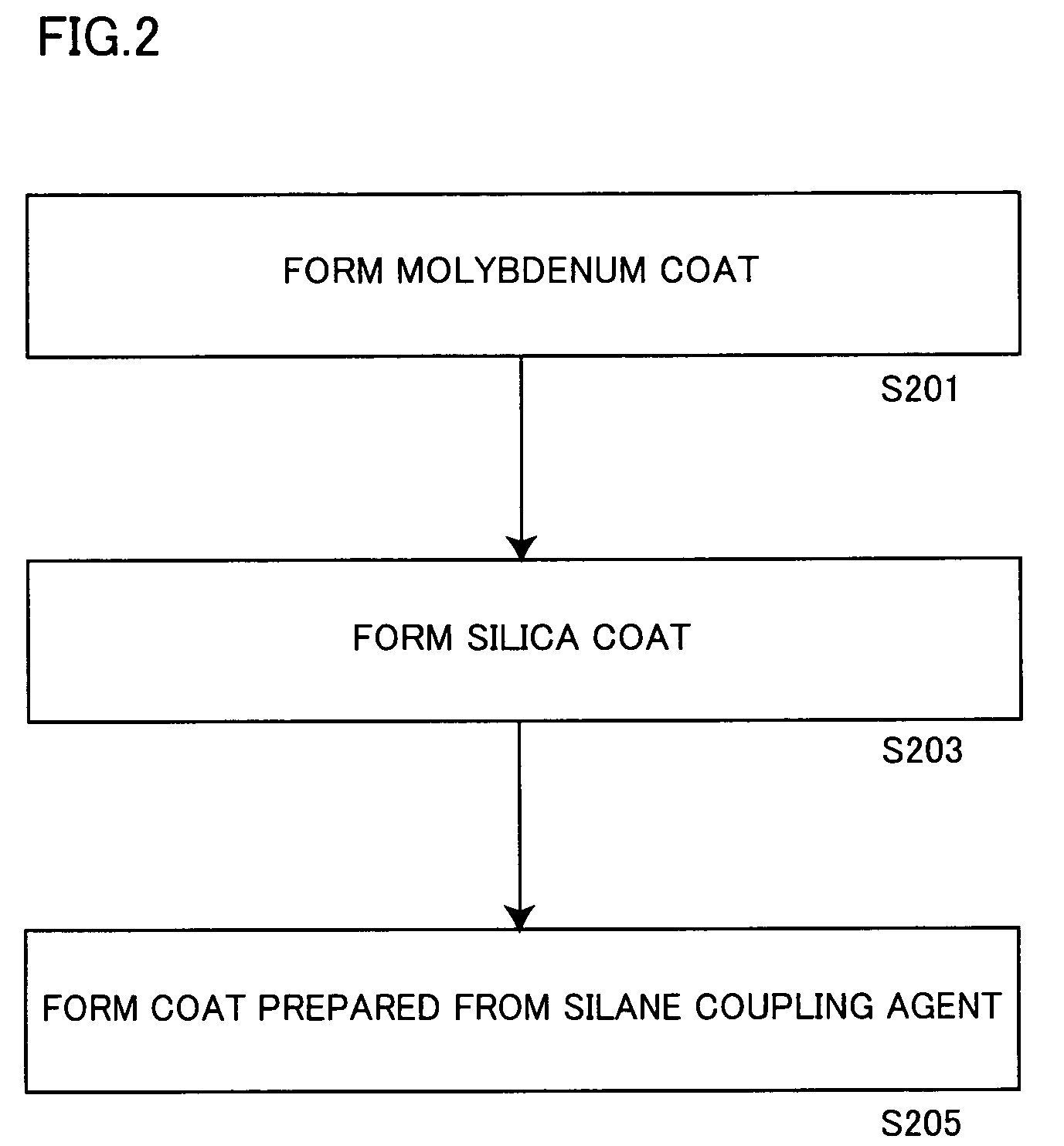Aluminum pigment, process for production thereof and resin composition
a technology of aluminum pigment and resin composition, which is applied in the field of aluminum pigment, can solve the problems of remarkably deteriorating the properties of paint or the reaction of aluminum pigment, low storage stability of water-dispersive aluminum pigment, and low weather resistance, and achieve excellent dispersibility and stability, and excellent designability
- Summary
- Abstract
- Description
- Claims
- Application Information
AI Technical Summary
Benefits of technology
Problems solved by technology
Method used
Image
Examples
referential example 1
[0185]A solution obtained by gradually adding 0.5 g of metallic molybdenum powder to 10 g of hydrogen peroxide water containing 30% of hydrogen peroxide and making reaction was dissolved in 600 g of isopropyl alcohol, and stirred at 50° C. for 1 hour with addition of 153.8 g (aluminum content: 100 g) of a commercially available aluminum pigment (7640NS by Toyo Aluminum K.K., solid content: 65%).
[0186]Thereafter monoethanolamine was added to the aforementioned slurry for adjusting the pH value of the slurry to 8.5.
[0187]Then, 40 g of tetraethoxysilane (hereinafter abbreviated as TEOS) was added to the pH-adjusted slurry, which in turn was further stirred at 50° C. for 10 hours. The pH value of the slurry was checked every 2 hours in this process, and adjusted to be 8.5 by adding monoethanolamine.
[0188]After termination of the aforementioned reaction, the slurry was solid-liquid separated through a filter, and the slurry containing the obtained aluminum pigment was dried at 105° C. fo...
referential examples 2 to 8
[0189]Aluminum pigments according to Referential Examples 2 to 8 were prepared similarly to Referential Example 1.
example 9
[0190]153.8 g (aluminum content: 100 g) of an aluminum pigment (7640NS by Toyo Aluminum K.K., solid content: 65%) and 3 g of 3-aminopropyl triethoxysilane employed as a catalyst were added to 600 g of IPA, and the mixture was stirred at 50° C. for 1 hour.
[0191]Thereafter monoethanolamine was added to the aforementioned slurry for adjusting the pH value of the slurry to 8.5.
[0192]Then, 30 g of TEOS and 10 g of decyl trimethoxysilane were added to the pH-adjusted slurry, which in turn was further stirred at 50° C. for 10 hours. The pH value of the slurry was checked every 2 hours in this process, and adjusted to be 8.5 by adding monoethanolamine.
[0193]After termination of the aforementioned reaction, the slurry was solid-liquid separated through a filter, and the slurry containing the obtained aluminum pigment was dried at 105° C. for 3 hours for obtaining a powdered aluminum pigment.
PUM
| Property | Measurement | Unit |
|---|---|---|
| particle diameter | aaaaa | aaaaa |
| particle diameter | aaaaa | aaaaa |
| particle diameter | aaaaa | aaaaa |
Abstract
Description
Claims
Application Information
 Login to View More
Login to View More - R&D
- Intellectual Property
- Life Sciences
- Materials
- Tech Scout
- Unparalleled Data Quality
- Higher Quality Content
- 60% Fewer Hallucinations
Browse by: Latest US Patents, China's latest patents, Technical Efficacy Thesaurus, Application Domain, Technology Topic, Popular Technical Reports.
© 2025 PatSnap. All rights reserved.Legal|Privacy policy|Modern Slavery Act Transparency Statement|Sitemap|About US| Contact US: help@patsnap.com



